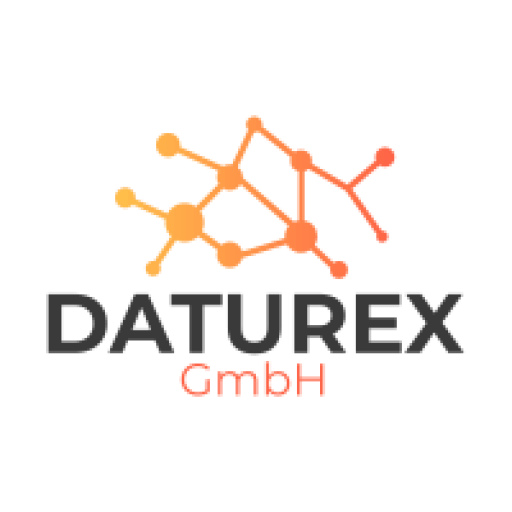In the digital era API security a key issue for companies. Cybersecurity and Information security are at the top of the agenda for CIOs and technical managers. The Protection for web applications through robust APISecurity measures is crucial to protect data and systems from threats.
The landscape of the API security is constantly evolving. Organizations must continually adapt their security strategies to keep pace with new vulnerabilities. The OWASP Top Ten API Security Vulnerabilities provides a valuable guide for developing effective protection measures.
Important findings
- API security is a top priority for companies
- Cybersecurity requires continuous adaptation
- OWASP Top Ten serves as a guide for API protection
- Regular checks of the Security measures are necessary
- Protection for web applications is crucial for data security
Introduction to API security
APIs are the key to modern software development. They enable applications to communicate with each other and exchange data. The API definition includes rules and protocols for this interaction. With the increasing networking of systems, the Importance of API security.
Definition and importance of APIs
An API (Application Programming Interface) is an interface that enables data to be exchanged between different software systems. It defines how requests and responses must be structured. APIs are the backbone of many digital services and applications.
Current trends in API usage
The API trends show a rapid development. According to studies, there are over 24,000 public APIs that are used by millions of developers. Companies are increasingly relying on API strategies for growth and innovation.
| API trend | Description |
|---|---|
| Microservices | Building applications from small, independent services |
| Cloud-native APIs | Optimization for cloud environments |
| API-first development | Planning and design of APIs before implementation |
Why API security is crucial
The Importance of API security cannot be overestimated. APIs often process sensitive data and provide access to critical systems. A security incident can have serious consequences, from data leaks to financial losses. It is therefore essential to protect APIs through authentication, authorization and data validation.
APIs are the gateway to our digital resources. Ensuring their security is not just a technical necessity, but a business responsibility.
Most common API security risks
API security risks pose a growing threat to companies. Four critical vulnerabilities require special attention.
Broken Object Level Authorization (BOLA)
BOLA is a serious security risk with APIs. It occurs when users can access data for which they have no authorization. One example would be access to third-party account information by manipulating the user ID.
Broken Function Level Authorization
This Authorization error is caused by inadequate access controls. This allows users to perform functions that they are not authorized to perform. A typical scenario would be a normal user who gains administrator rights.
Excessive data disclosure
The Data disclosure is an underestimated risk. APIs often reveal more information than necessary. This can lead to the disclosure of sensitive data and provide attackers with valuable insights.
Injection vulnerabilities
Injection attacks exploit insufficiently validated inputs. Attackers can thus inject malicious commands and gain unauthorized access to data. SQL injection is a well-known example of this type of vulnerability.
To achieve this API security risks to minimize the risks, robust Security measures essential. Regular checks and updates of API security should be part of the routine.
API security: protection for your web applications
API protection is crucial for the Web application security. Different API types require specific security measures. SOAP APIs use robust protocols such as WS-Security and HTTPS-encryption. REST APIs rely on standardized HTTP methods and formats.
An important building block for the API protection are API gateways. They act as central control points for API traffic and implement essential security functions. This ensures the Web application security significantly improved.
Although GraphQL APIs offer great flexibility, they require particularly strong authentication and authorization mechanisms. Thorough input validation is essential here in order to close potential security gaps.
- SOAP APIs: WS-Security, HTTPS-Encryption
- REST APIs: Standardized HTTP methods
- API gateways: Central security control
- GraphQL APIs: Strong authentication, authorization, input validation
Regardless of the API type, companies should always implement up-to-date security measures. Regular checks and updates of security protocols are essential to ensure the highest level of protection for web applications.
Authentication and authorization
API authentication forms the foundation for secure web applications. It ensures that only authorized users have access to sensitive data. In this section, we look at proven methods and concepts.
OAuth 2.0 and OpenID Connect
OAuth 2.0 is a standard for secure API authorization. It enables applications to access resources on behalf of users without knowing their access data. OpenID Connect extended OAuth 2.0 functions for user authentication.

JSON Web Tokens (JWT)
JWTs are a secure means of transferring information between parties as a JSON object. They are often used in the API authenticationas they are compact and can be easily exchanged between different programming languages.
Principle of least privilege
The Least Privilege-principle is crucial for API security. It states that users should only be given the minimum necessary access rights. This minimizes potential damage in the event of a security incident and effectively protects sensitive data.
- Only grant users the necessary rights for their tasks
- Check and update authorizations regularly
- Implement role-based Access control
By combining these methods, you create a robust security architecture for your APIs. This not only protects your data, but also strengthens your users' trust in your applications.
Implementation of access control
The implementation of an effective API access control is crucial for the security of your web applications. A well-designed Access control protects your APIs from unauthorized access and potential security threats.
An important step is to place your APIs behind a Firewall or a API gateway. These protective measures act as the first line of defense against unwanted access. APIs should only be accessed via HTTPS to ensure encrypted communication.
Rate limits are another important instrument of the API access control. They limit the number of requests that a client can make in a certain period of time. This protects against overload attacks and misuse.
- Geovelocity checks: Detect suspicious changes of location
- Geo-fencing: Restrict API access to certain geographical regions
- Middleware code: Performs access control checks before forwarding requests
These measures enable granular control of API access and provide robust protection against various attack vectors.
| Protective measure | Function | Advantages |
|---|---|---|
| Firewall | Filters incoming and outgoing network traffic | Basic protection against unauthorized access |
| API gateway | Central management and monitoring of APIs | Improved safety and performance |
| Rate limiting | Limits the number of API requests | Protection against overload and misuse |
An effective API access control requires a combination of different Security measures. Regular reviews and adjustments are essential to stay one step ahead of constantly evolving threats.
Encryption of API communication
The API encryption is an essential building block for the security of digital systems. It protects confidential data from unauthorized access and ensures the integrity of the transmitted information.
HTTPS usage
HTTPS forms the backbone of secure API communication. It encrypts data traffic between client and server, prevents eavesdropping and protects against tampering. Every API should use HTTPS to secure sensitive data.
- Protects against man-in-the-middle attacks
- Increases user confidence
- Improves the ranking in search engines

HTTP Strict Transport Security
HSTS complements HTTPS and provides additional security. It forces browsers to only accept encrypted connections. This prevents downgrade attacks and strengthens the security of API communication.
| Safety aspect | Without HSTS | With HSTS |
|---|---|---|
| Protection against SSL stripping | No | Yes |
| Forced HTTPS usage | No | Yes |
| Prevention of downgrade attacks | Limited | Comprehensive |
The combination of HTTPS and HSTS forms a robust protective layer for APIs. It secures data transmission and protects against many common attack vectors. Developers should always use these technologies to maximize the security of their APIs.
Data validation and cleansing
The API data validation is a crucial step in securing your web applications. It helps to prevent injection attacks and maintain data integrity. A thorough Data cleansing protects against unexpected entries and potential security risks.
For an effective API data validation the following procedure is recommended:
- Check all incoming data for validity and format
- Filter unwanted characters and potentially malicious code
- Limit the input length to avoid overloading
- Use typed data structures to avoid misinterpretations
The Data cleansing is an important part of the Injection prevention. It removes or neutralizes potentially dangerous elements in the API requests. This prevents SQL injection, cross-site scripting and other attacks on your application.
| Validation type | Description | Example |
|---|---|---|
| Type testing | Ensures that data corresponds to the expected type | Check for integer for ID fields |
| Format validation | Checks whether data follows a specific format | E-mail address format validation |
| Area test | Ensures that numerical values are within defined limits | Age between 0 and 120 |
By consistently applying these techniques, you can significantly increase the security of your API. Remember: A thorough API data validation is your first line of defense against malicious attacks.
API risk assessment
A thorough API risk assessment is crucial for the security of your web applications. It helps to identify potential vulnerabilities and implement suitable protective measures.
OWASP API Security Top 10
The OWASP Top 10 List for API Security is a valuable tool for risk assessment. It covers the most common security risks for APIs and provides a solid basis for your assessment. Use this list to systematically check your APIs for known vulnerabilities.
Regular safety checks
Carry out the following at regular intervals Security checks of your APIs. Identify critical systems and sensitive data that would be at risk in the event of an API attack. Based on these findings, develop a treatment plan and implement the necessary controls to reduce the identified risks to an acceptable level.
Carefully document all checks carried out. If there are new threats or changes to your APIs, you should repeat the risk assessment. This will ensure that your API security is always up to date and provides effective protection against potential attacks.
API gateway and firewall protection
Effective protection for APIs requires multiple layers of security. API gateways and firewalls play a central role in this. They form an additional line of defense against potential attacks and strengthen the overall security of your API infrastructure.
API gateways act as gatekeepers for your APIs. They take on important tasks such as authentication, authorization and Access control. By implementing rate limits, they protect against overload attacks. They also enable centralized logging of all API activities.
Firewalls supplement the protection provided by API gateways. They filter incoming data traffic and block known attack patterns. Web application firewalls (WAFs) are particularly effective against common threats such as SQL injection or cross-site scripting.
The combination of API gateway and Firewall offers comprehensive protection:
- Centralized enforcement of security policies
- Effective traffic management
- Protection against known and new threats
- Improved monitoring and analysis
By using these technologies, you create a robust security architecture for your APIs. This ensures not only the protection of sensitive data, but also the stability and availability of your services.
Monitoring and logging of API activities
The API monitoring and Activity logging are crucial for the security of your web applications. A comprehensive monitoring system helps to detect potential threats at an early stage and respond to them.
Detection of suspicious patterns
An effective API monitoring involves analyzing API traffic for unusual activity. This includes:
- Sudden increase in API requests
- Unusual access times
- Frequent authentication errors
- Access to unauthorized resources
By implementing real-time monitoring, you can quickly identify suspicious patterns and take appropriate action.
Incident response planning
A well-structured Incident Response-plan is essential to respond appropriately to API security incidents. This plan should include the following elements:
- Clear responsibilities and communication channels
- Steps to contain the incident
- Procedure for restoring affected systems
- Processes for documenting and analyzing the incident
Regular reviews of the protocols and training of the team in the Incident Response strengthen your ability to respond effectively to security threats. The combination of careful API monitoring, more detailed Activity logging and a well thought out Incident Response-plan forms the backbone of a robust API security strategy.
API versioning and lifecycle management
A clever API versioning is the key to long-term security. It helps to maintain compatibility between different API versions. A well thought out Life cycle management ensures that APIs are well supported from publication to decommissioning.
Good API governance relies on regular checks. This allows outdated or insecure API versions to be quickly identified and replaced. This reduces the risks for the entire API infrastructure. Careful documentation of all versions and changes is essential.
It is important for developers and users to maintain an overview at all times. A clear versioning strategy makes this possible. It shows which API version is currently up to date and what new features it brings. This keeps the API landscape clear and secure.


Recent Comments